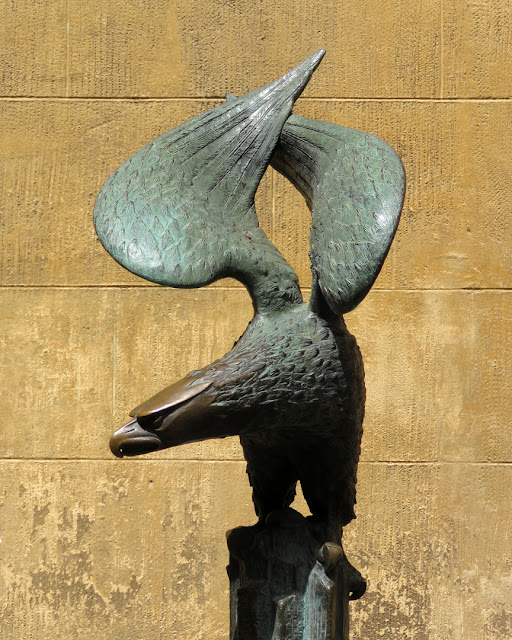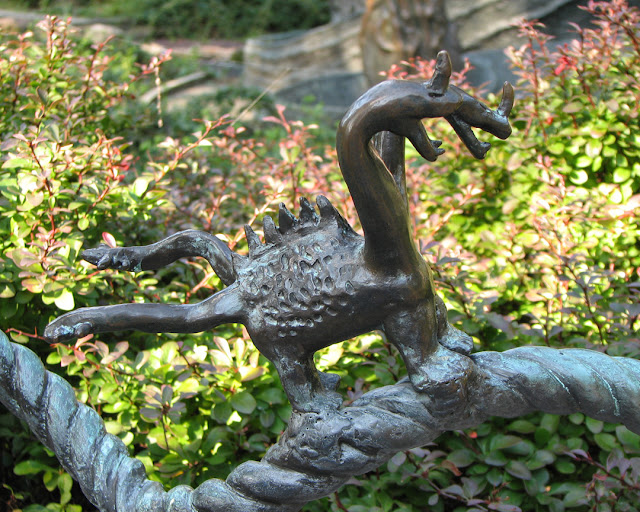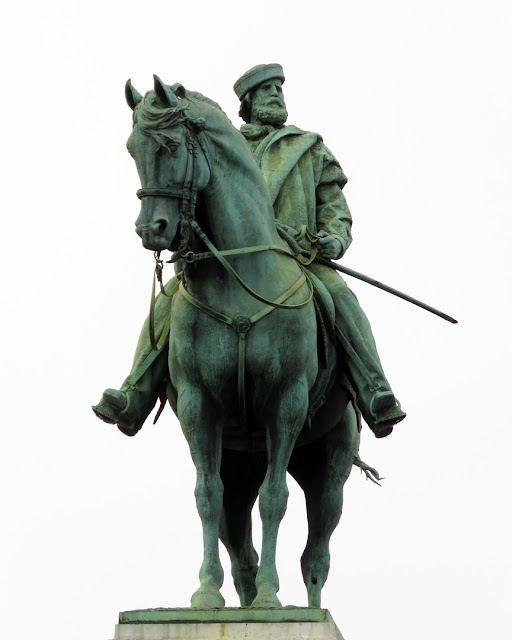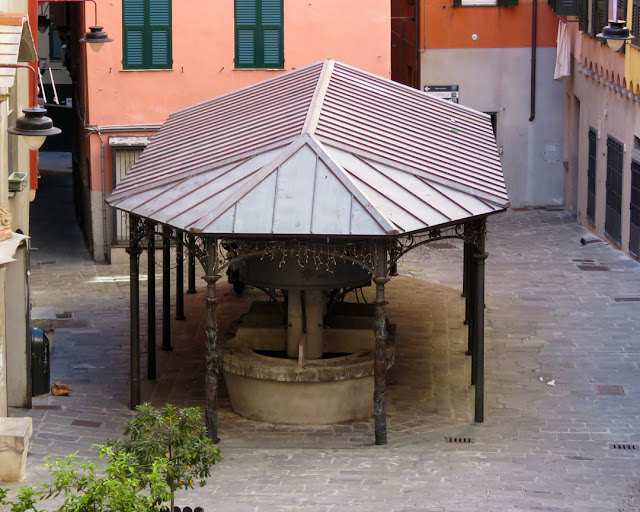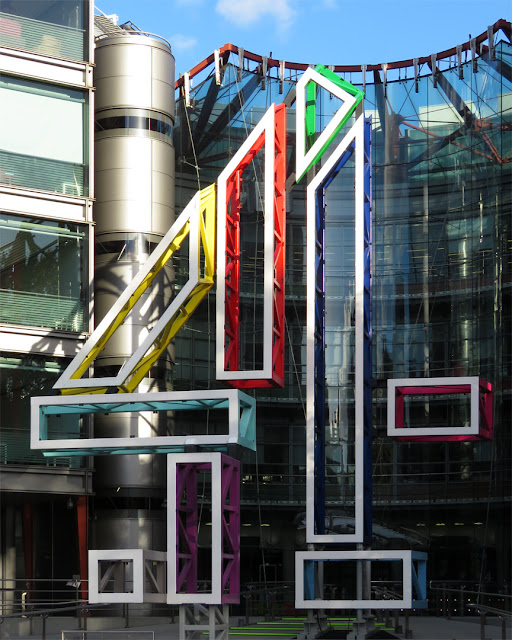Saturday, September 30, 2017
Géza Hofi
Géza Hofi by Stremeny Géza, 2004
Mikroszkóp Theatre, Nagymező utca
Budapest, September 2017
“Géza Hofi (born Géza Hoffmann, July 2, 1936 in Budapest; died April 10, 2002 in Budapest) was a Hungarian actor and comedian. He is probably the most popular Hungarian parodist and had strong influence on Hungarian cabaret.” (Géza Hofi, Wikipedia)
Friday, September 29, 2017
Thursday, September 28, 2017
Wednesday, September 27, 2017
Cloister of Santo Stefano
Cloister of the Basilica of Santo Stefano
Piazza Santo Stefano
Bologna, June 2015
“The focus of scholarly discussion has been for many years the supposed similarity between the so-called ‘New Jerusalem’ rebuilt here, according to a vita written in 1180, by Saint Petronius in the 5th century, and the largely lost 4th-century complex erected by Constantine the Great at the purported site of the crucifixion and resurrection of Jesus. Unfortunately the archaeological evidence from Bologna dates primarily to the 11th and 12th centuries, leaving the question about an earlier date still unanswered (at least until 1981). On the other hand, archaeology has meanwhile delivered many answers regarding the Constantinian church complex from Jerusalem, therefore the main interest presented by the 12th-century parts of the Church of Santo Stefano might much rather be their similarity to the almost contemporary Crusader Church of the Holy Sepulchre from Jerusalem, of which not all parts are preserved.” (Basilica of Santo Stefano, Wikipedia)
Tuesday, September 26, 2017
Monday, September 25, 2017
David and Allegories
Copy of the David by Michelangelo, 1504 (1873)
With sculptural figures of the four times of day
Piazzale Michelangelo
Florence, May 2017
“The square, dedicated to the Renaissance sculptor Michelangelo, has bronze copies of some of his marble works found elsewhere in Florence: the David and the four allegories of the Medici Chapel of San Lorenzo. The monument was brought up by nine pairs of oxen on 25 June 1873.” (Piazzale Michelangelo, Wikipedia)
Sunday, September 24, 2017
La sardana
“La sardana” by Josep Cañas i Cañas, 1965
Carretera de Montjuïc, Montjuïc
Barcelona, March 2017
“The sardana is a type of circle dance typical of Catalan culture. The dance was originally from the Empordà region, but started gaining popularity throughout Catalonia during the 20th century. There are two main types, the original sardana curta (short sardana) style and the more modern sardana llarga (long sardana), which is more popular. Other more unusual sardanes are the sardana de lluïment and the sardana revessa.” (Sardana, Wikipedia)
Saturday, September 23, 2017
Santa Maria dei Miracoli
Church of Santa Maria dei Miracoli
Campiello dei Miracoli, Cannaregio
Venice, September 2013
“Santa Maria dei Miracoli is a church in the sestiere of Cannaregio, in Venice, Italy. Also known as the ‘marble church’, it is one of the best examples of the early Venetian Renaissance including colored marble, a false colonnade on the exterior walls (pilasters), and a semicircular pediment. The organisation ‘Save Venice’ restored the church over a period of ten years, from 1987 to 1997 (they had estimated as period of two years). The marble cladding contained 14 percent of salts, and was on the point of bursting. All marble cladding was removed, and cleaned in stainless steel tanks, in a solution of distilled water. The restoration was calculated to cost 1 million dollars, the final cost was 4 million dollars. The main altar is reached by a series of steps. The circular facade windows recall Donato Bramante's churches in Milan.” (Church of Santa Maria dei Miracoli, Wikipedia)
Friday, September 22, 2017
Broadgate Circle
Broadgate Circle, Exchange House, Exchange Square
Broadgate, City of London
London, September 2016
“As a highly regarded urban space, the recent alterations to the Circle have been proposed with a clear and concise rationale. The changes have dramatically enhanced the amenity and civic provision, whilst celebrating the original qualities of the Circle. The Circle is one of the best examples of the travertine use in the UK. The architectural detail and workmanship of the stone with interfacing materials is exemplary. Bronze anodised aluminium and Siberian larch have been used to complement the travertine, and this simple and elegant materials palette enhances the elegance of the Circle’s form and geometry. Nestled within the 54 travertine columns is the reconstructed first floor restaurant, which is completely open beneath. It is now a wider, triple aspect unit with commanding views over the Circle. The first floor cantilevers forwards and backwards from the columns, benefitting from a refined structural strategy which transfers the additional loads back to the original.” (Broadgate Circle, Arup Associates)
Thursday, September 21, 2017
Two Men in a Boat
Two men in a boat
Lungarno degli Acciaiuoli
Florence, April 2015
“You will then get on board the barchetto, one of the only 4 original traditional wooden boats left in Florence, conducted by a ‘barcaiolo’, a true Florentine tradition holder that will guide you with his long-reaching sweeping-oar. No noisy engines, only the charm of tradition and the voice of your expert guide to unveil the secrets of the Arno river as you stroll on its calm waters and discover its history and the beautiful Palazzos that frame its ancient riverbed.” (Florence Boat Tour, City Discovery)
Wednesday, September 20, 2017
Neue Synagoge
Neue Synagoge (New Synagogue), 1866
Oranienburger Straße
Berlin, September 2011
“The front of the building, facing Oranienburger Straße, is richly ornamented with shaped bricks and terracotta, accented by coloured glazed bricks. Beyond the entrance, the building's alignment changes to mesh with pre-existing structures. The synagogue's main dome with its gilded ribs is an eye-catching sight. The central dome is flanked by two smaller pavilion-like domes on the two side-wings. Beyond the façade was the front hall and the main hall with 3,000 seats. Due to the unfavourable alignment of the property, the building's design required adjustment along a slightly turned axis. The Neue Synagoge is also a monument of early iron construction. The new building material (iron was previously not used in building construction) was visible in its use for the outside columns, as well as in the dome's construction. (Iron was also a core component for the now-lost floor structure of the main hall.)” (New Synagogue, Wikipedia)
Tuesday, September 19, 2017
Aquila
Aquila (Eagle) fountain by Bruno Buracchini, 1963
Piazza Postierla
Siena, April 2017
“The fountain of Aquila (eagle) contrada features Bruno Buraccini’s bronze sculpture of an eagle with wings partially extended and was inaugurated in 1965. It is located in a corner known as Quattro Cantoni where Via di Citta becomes Via di Stalloreggi, about 200 meters south of the Campo in Terzo di Città. Aquila’s saint day is the feast of the Nativity of Mary, celebrated on September 8.” (Siena's Contrada Fountains, La Bella Vita in Italia)
Monday, September 18, 2017
Sunday, September 17, 2017
Saturday, September 16, 2017
Palau Güell
Detail of a chimney
Palau Güell by Antoni Gaudí, 1888
Carrer Nou de la Rambla, El Raval
Barcelona, March 2017
“The Palau Güell (Güell Palace) is a mansion designed by the architect Antoni Gaudí for the industrial tycoon Eusebi Güell and built between 1886 and 1888. It is situated on the Carrer Nou de la Rambla, in the El Raval neighbourhood of the city of Barcelona in Catalonia, Spain. It is part of the UNESCO World Heritage Site ‘Works of Antoni Gaudí’. The home is centered around the main room for entertaining high society guests. Guests entered the home in horse-drawn carriages through the front iron gates, which featured a parabolic arch and intricate patterns of forged ironwork resembling seaweed and in some parts a horsewhip. Animals could be taken down a ramp and kept in the livery stable in the basement where the servants resided, while the guests went up the stairs to the receiving room. The ornate walls and ceilings of the receiving room disguised small viewing windows high on the walls where the owners of the home could view their guests from the upper floor and get a ‘sneak peek’ before greeting them, in case they needed to adjust their attire accordingly. The main party room has a high ceiling with small holes near the top where lanterns were hung at night from the outside to give the appearance of a starlit sky.” (Palau Güell, Wikipedia)
Friday, September 15, 2017
Galleria Nazionale d'Arte Moderna
Galleria Nazionale d'Arte Moderna (GNAM) or National Gallery of Modern Art
Palazzo delle Belle Arti (Palace of Fine Arts) by Cesare Bazzani, 1915
Via delle Belle Arti
Rome, April 2013
“The current building, the Palazzo delle Belle Arti (Palace of Fine Arts) at Via delle Belle Arti, 113 (near the Etruscan Museum) was designed by prominent Italian architect Cesare Bazzani. It was completed between 1911 and 1915. The facade features exterior architectural friezes by sculptors Ermenegildo Luppi, Adolfo Laurenti, and Giovanni Prini, with four figures of Fame holding bronze wreaths, sculpted by Adolfo Pantaresi and Albino Candoni. The museum was expanded by Bazzani in 1934, and again in 2000 by architects Diener & Diener.” (Galleria Nazionale d'Arte Moderna, Wikipedia)
Thursday, September 14, 2017
St Bride's Church
The spire of St Bride's Church
Fleet Street, City of London
London, September 2016
“St Bride's Church is a church in the City of London, England. The building's most recent incarnation was designed by Sir Christopher Wren in 1672 in Fleet Street in the City of London, though Wren's original building was largely gutted by fire during the London Blitz in 1940. Due to its location in Fleet Street, it has a long association with journalists and newspapers. The church is a distinctive sight on London's skyline and is clearly visible from a number of locations. Standing 226 feet (69m) high, it is the second tallest of all Wren's churches, with only St Paul's itself having a higher pinnacle.” (St Bride's Church, Wikipedia)
Wednesday, September 13, 2017
Cosimo I
Equestrian Monument of Cosimo I by Giambologna, 1594
Piazza della Signoria
Florence, May 2017
“This statue follows the Classical Roman tradition of Equestrian statues as the monument to a ruler's power, evident from the Statue of Marcus Aurelius in ancient Rome and the Regisole in Ferrara, and continued in the Renaissance by examples such as Donatello's Statue of Gattamelata (1453) in Padua and Verrocchio's Statue of Bartolomeo Colleoni (1488) in Venice. This monument was commissioned by Cosimo's son Ferdinando I from the sculptor Giambologna, who also completed the Rape of the Sabines in the adjacent Loggia dei Lanzi. The Cosimo statue stands in front of the north corner of the Palazzo della Signoria, the northernmost of the row of statues, adjacent to the Fountain of Neptune (1563) by Ammannati, that had been commissioned by Cosimo himself. Together this duo celebrates the land and sea ambitions of Cosimo. The base of the statue has reliefs with scenes from the life of Cosimo, including his coronation in Rome as Grand-Duke in 1570 and his entrance into Siena as a ruler (1557) after his victory over that republic. The posture of the trotting horse in this statue is similar to those of prior statues, with right leg raised, however unlike Marcus Aurelius, Cosimo uses stirrups and his horse shows the restraint of the bridle, albeit without much tension. Cosimo, like Gattemalata, holds a military baton, armor, and sheathed sword.” (Equestrian Monument of Cosimo I, Wikipedia)
Tuesday, September 12, 2017
Children's Sculpture Garden
Children's Sculpture Garden
Cathedral of Saint John the Divine
Amsterdam Avenue, Morningside Heights
New York, September 2008
“The Children's Sculpture Garden is located next to the Cathedral of St. John the Divine in the Morningside Heights of Manhattan. Within the garden are "Animals of Freedom" sculptures created by artists from kindergarten through high school that were selected in a public competition in 1985. The sculptures are placed around the ring of freedom. The centerpiece of the Children's Sculpture Garden is the "Fountain of Peace" sculpture by Greg Wyatt, sculptor-in-residence at the Cathedral.” (Children's Sculpture Garden and the Fountain of Peace, NYC ♥ NYC)
Monday, September 11, 2017
Sunday, September 10, 2017
Der Trommler
“Der Trommler” (The Drummer) by Michael Sandle, 1985
Rotunda, Tate Britain, Millbank
London, September 2016
Saturday, September 9, 2017
Antica Macelleria
“Antica Macelleria di Alfredo Nencioni”
(Alfredo Nencioni Old Butcher's)
Now a bookshop, Via Ghibellina
Florence, April 2015
Friday, September 8, 2017
Tibidabo
Temple Expiatori del Sagrat Cor
(Expiatory Church of the Sacred Heart of Jesus)
Tibidabo Amusement Park
Tibidabo, Collserola Ridge
Barcelona, March 2017
“Tibidabo is a mountain overlooking Barcelona, Catalonia, Spain. At 512 metres (1,680 ft), it is the tallest mountain in the Serra de Collserola. Rising sharply to the north-west, it affords spectacular views over the city and the surrounding coastline. The summit of the mountain is occupied by the Sagrat Cor church and adjacent Tibidabo Amusement Park. The Torre de Collserola telecommunications tower is a short walk away. All three are prominently visible from most of the city of Barcelona. Designed by Enric Sagnier, the church took 60 years to construct and is topped by a sculpture of the Sacred Heart of Jesus by Josep Miret Llopart. Tibidabo can be reached via the Tibidabo Funicular, which was the first of its kind in Spain, and by the Tramvia Blau or road. The Transports Metropolitans de Barcelona minibus service 111 connects it to Vallvidrera village and the upper station of the Vallvidrera funicular.” (Tibidabo, Wikipedia)
Thursday, September 7, 2017
Truogoli di Santa Brigida
Truogoli di Santa Brigida (Santa Brigida washing places)
Piazza dei Truogoli di Santa Brigida
Genoa, April 2016
“Piazza dei Truogoli of Santa Brigida is the place of the ancient wash houses: from Via Balbi it descends towards Via Pré and is surrounded by renovated and coloured old houses, with a sacred aedicule on a wall. At the centre of the square there is iron roofing covering the ‘truogoli’, the washhouses, where until a few decades ago, women in the neighbourhood used to meet to wash clothes and socialize. The old Genoese people said that in Santa Brigida ‘the water was wasted’ because the fountain of the washhouse was always open. The square and the ‘truogoli’ are named after the convent of Santa Brigida, now disappeared, which was situated on the uphill side of the square. Nowadays this is one of the most beautiful squares of the old town centre, it's charming when it's empty and quiet and it’s lively when there are many people visiting its restaurants, bookshops and shops.” (I Truogoli di Santa Brigida, Comune di Genova)
Wednesday, September 6, 2017
One Pancras Square
One Pancras Square by David Chipperfield, 2013
Pancras Square, King's Cross
London, September 2016
“So elemental is the expression of the little office block that David Chipperfield Architects has completed at King’s Cross that its configuration can be described, pretty comprehensively, in a couple of sentences. Nine slabs of the same rectangular plan span between a core and a peristyle of evenly distributed columns. Glazing is recessed from the column line at ground level – forming a continuous colonnade – and across the entirety of the major south-facing elevation – forming balconies – but elsewhere structure and glass align. Judged as diagram, the design of One Pancras Square could scarcely be more economical and yet, for all its cultivated simplicity, the reality proves surprisingly ambiguous in tectonic effect and rich in historic association. Fundamental to that complexity is the energy that the architect has invested in the design of the columns.” (One Pancras Square, The Architect's Journal)
Tuesday, September 5, 2017
BNCF Rotunda
Detail of the Rotunda seen from Via Antonio Magliabechi
Biblioteca Nazionale Centrale di Firenze (BNCF)
(National Central Library of Florence)
Florence, May 2017
“The library was founded in 1714 when scholar Antonio Magliabechi bequeathed his entire collection of books, encompassing approximately 30,000 volumes, to the city of Florence. By 1743, it was required that a copy of every work published in Tuscany be submitted to the library. Originally known as the Magliabechiana, the library was opened to the public in 1747. Its holdings were combined with those of the Biblioteca Palatina Lorenese in 1861, and by 1885, the library had been renamed as the National Central Library of Florence, or the BNCF. Since 1870, the library has collected copies of all Italian publications. Since 1935, the collections have been housed in a building designed by Cesare Bazzani and V. Mazzei, located along the Arno River in the quarter of Santa Croce. Before this, they were found in various rooms belonging to the Uffizi Gallery. The National Library System (SBN), located in the BNCF, is responsible for the automation of library services and the indexing of national holdings. Unfortunately, a major flood of the Arno River in 1966 damaged nearly one-third of the library's holdings, most notably its periodicals and Palatine and Magliabechi collections. The Restoration Center was subsequently established and may be credited with saving many of these priceless artifacts. However, much work remains to be done and some items are forever lost.” (National Central Library, Wikipedia)
Monday, September 4, 2017
Théâtre de la Porte Saint-Martin
Facade of the Théâtre de la Porte Saint-Martin by Oscar de la Chardonnière (architect)
and Jacques-Hyacinthe Chevalier (sculptor), 1873
Boulevard Saint-Martin
Quartier de la Porte-Saint-Martin, 10th arrondissement
Paris, July 2010
“The Théâtre de la Porte Saint-Martin is a venerable theatre and opera house at 18, Boulevard Saint-Martin in the 10th arrondissement of Paris. It was first built very rapidly in 1781 under the direction of Nicolas Lenoir (fr) (1726–1810) to house the Paris Opéra, whose previous home, the second Salle du Palais-Royal, had burned down on 8 June 1781. The new theatre had a capacity of about 2,000 spectators and included a parterre with the lowest-priced tickets sold only to males who stood throughout the performances, an amphitheatre, and four rows of boxes. The Opéra used the theatre from 27 October 1781 until August 1794. The theatre was destroyed by fire during the Paris Commune of 1871 and replaced in 1873 with a building designed by the architect Oscar de la Chardonnière (d. 1881), who enlisted the aid of the sculptor Jacques-Hyacinthe Chevalier (1825–1895) in the design of the new facade. The new interior was designed by H. Chevalier. With relatively brief interruptions, the theatre has been in continuous operation since.” (Théâtre de la Porte Saint-Martin, Wikipedia)
Sunday, September 3, 2017
Neptune
Statue of Neptune by Giambologna, 1567
Fountain of Neptune
Piazza del Nettuno
Bologna, June 2015
“The Fountain of Neptune (Italian: Fontana di Nettuno) is a monumental civic fountain located in the eponymous square, Piazza del Nettuno, next to Piazza Maggiore, in Bologna, Italy. Its bronze figure of Neptune, extending his reach in a lordly gesture of stilling and controlling the waters, is an early work by Giambologna, completed about 1567. An innovation of Giambologna's fountain designs is the fantastic and non-geometrical forms he gave to the basins into which water splashed and flowed, ‘curiously folded, bulging and elastic in form’, as Rosalind Grippi remarked. The fountain is a model example of Mannerist taste of the courtly elite in the mid-sixteenth century: construction of the statue was commissioned by the Cardinal Legate of the city, Charles Borromeo, to symbolize the fortunate recent election of Borromeo's uncle as Pope Pius IV. The work was designed by the Palermitan architect Tommaso Laureti in 1563, with an over-lifesize bronze of the god Neptune on the top, executed by Giambologna, who had submitted a model for the fountain of Neptune in Florence, but had lost the commission to Baccio Bandinelli. Before the fountain was built, an entire edifice was demolished to make space for it. The fountain was completed in 1565, and the Neptune was fixed in place within a couple of years.” (Fountain of Neptune, Wikipedia)
Saturday, September 2, 2017
Big 4
“Big 4” by Freestate & Atelier One, 2007
Channel Four Television Corporation
Horseferry Road
London, September 2016
“The design and construction of the Big 4 was a collaboration between Mike Smith Studio, Freestate and Atelier One, and was designed to show Channel 4's logo when the statue is correctly aligned. The statue itself is made out of steel bars, and the structure was Fabricated by Mike Smith Studio. The intention was to allow other artists to use the framework of the statue for art installations. The statue is located outside the headquarters of Channel Four Television Corporation on Horseferry Road, London. It was unveiled on 16 October 2007 by Culture Minister Margaret Hodge, to celebrate the 25th anniversary of Channel 4 and to coincide with the television series The Big Art Project.” (Big 4, Wikipedia)
Subscribe to:
Posts (Atom)












